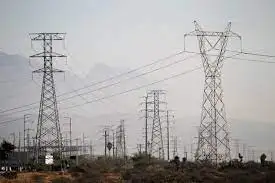Ontario firms to get about 300 million dollar break a year
TORONTO, ONTARIO - Recognizing it lacks a clear strategy for keeping the lights on, the Ontario government was forced to stabilize electricity prices for large industrial consumers.
Energy Minister Donna Cansfield announced the subsidy on electricity prices for some 55,000 major consumers will continue, even though the Liberals condemned the previous Conservative government for this practice.
"Ontario's large industrial electricity consumers will benefit from three years of stable, predictable pricing on electricity provided by the Ontario Power Generation," she told a news conference.
But for many companies, particularly in the pulp and paper industry, the bailout comes too late because they have already closed their doors.
"I don't think this announcement today is going to bring those businesses back to Ontario," said Adam White, president of the Association of Major Power Consumers in Ontario.
According to Statistics Canada, Ontario lost more than 52,000 good-paying industrial jobs last year, many of them in the auto, chemical and pulp and paper industries.
"This announcement begs the question where (Premier Dalton) McGuinty has been for the last three months while thousands of workers in this province have been losing good jobs... jobs that will probably never come back to the province of Ontario," said Peter Kormos, the New Democrat MPP for Niagara Centre.
The announcement underscores the fact that electricity is the Liberal government's most daunting challenge.
As it stands, consumption is going through the roof, the existing nuclear fleet reaches its life expectancy by 2020, new nuclear plants take a decade and more to get up and running, gas-powered plants are running into environmental and economic problems, conservation initiatives aren't aggressive enough and hydro power is virtually tapped out.
The province needs at least 25,000 megawatts of new supply over the next 15 years.
Meanwhile, the government is able to offer a rebate on about a third of power produced by OPG by limiting the provincially owned utility's profits. This move is expected to cost OPG about $300 million a year, to be paid out quarterly in the form of rebates to the major consumers.
It irks large consumers that the virtual utility monopoly, which produces 70 per cent of the electricity in Ontario, is allowed to rack up a profit on their backs. Since 2001, the price of electricity has gone up 60 per cent.
Cansfield said continuing the subsidy would affect about 55,000 large industrial and commercial electricity consumers that each use more than 250,000 kilowatt hours a year. The average home uses about 12,000 kilowatt hours of electricity each year.
"This is an important step for the Ontario economy and means an enhanced competitiveness," Cansfield said.
Starting May 1, the revenue limit on OPG's unregulated facilities — small hydroelectric stations and coal-fired power plants — will drop to 4.6 cents per kilowatt hour from the present limit of 4.7 cents.
The program was set to expire April 30.
Since May 2005, the average wholesale price of electricity in Ontario has been about 7.55 cents a kilowatt hour.
At the end of last year, the rebate program returned about $740 million, and a senior energy ministry official says the latest reduction would mean another $30 million in rebates.
According to industry officials, the cap on pricing for the large industrial consumers will indirectly benefit residential and small business consumers, however slightly, because the Ontario Energy Board will factor it in before setting a new price for electricity on May 1. Some reports say homeowners and businesses could face rate increases of as much as 25 per cent.
The government's decision to extend the price cap was applauded by some of Ontario's biggest employers, whose businesses use millions of dollars worth of electricity every year. The average large industrial user will save between $1.5 million and $2 million on its electricity.
"Anyone who has spent time in our Sudbury operations knows it takes a lot of electricity to run our mines, our mills, our smelters and our refineries," said Scott Hand, chairman and CEO of Inco Ltd., noting the giant nickel company's electricity bill is about $300 million annually.
Related News

Worker injured after GE turbine collapse
WASHINGTON - A GE turbine collapsed at a wind farm in north-east Brazil, injuring a worker and sparking a probe into the fifth such incident this year, the manufacturer confirmed.
One of the manufacturer’s GE 2.72-116 turbines collapsed at Omega Energia’s Delta VI project in Maranhão, which was commissioned in 2018.
Three GE employees were on site at the time of the collapse on Tuesday (3 September), the US manufacturer confirmed.
One worker was injured and is currently receiving medical treatment, GE added.
"We are working to determine the root cause of this incident and to provide proper support as needed," it said
The turbine collapse in Brazil is…




